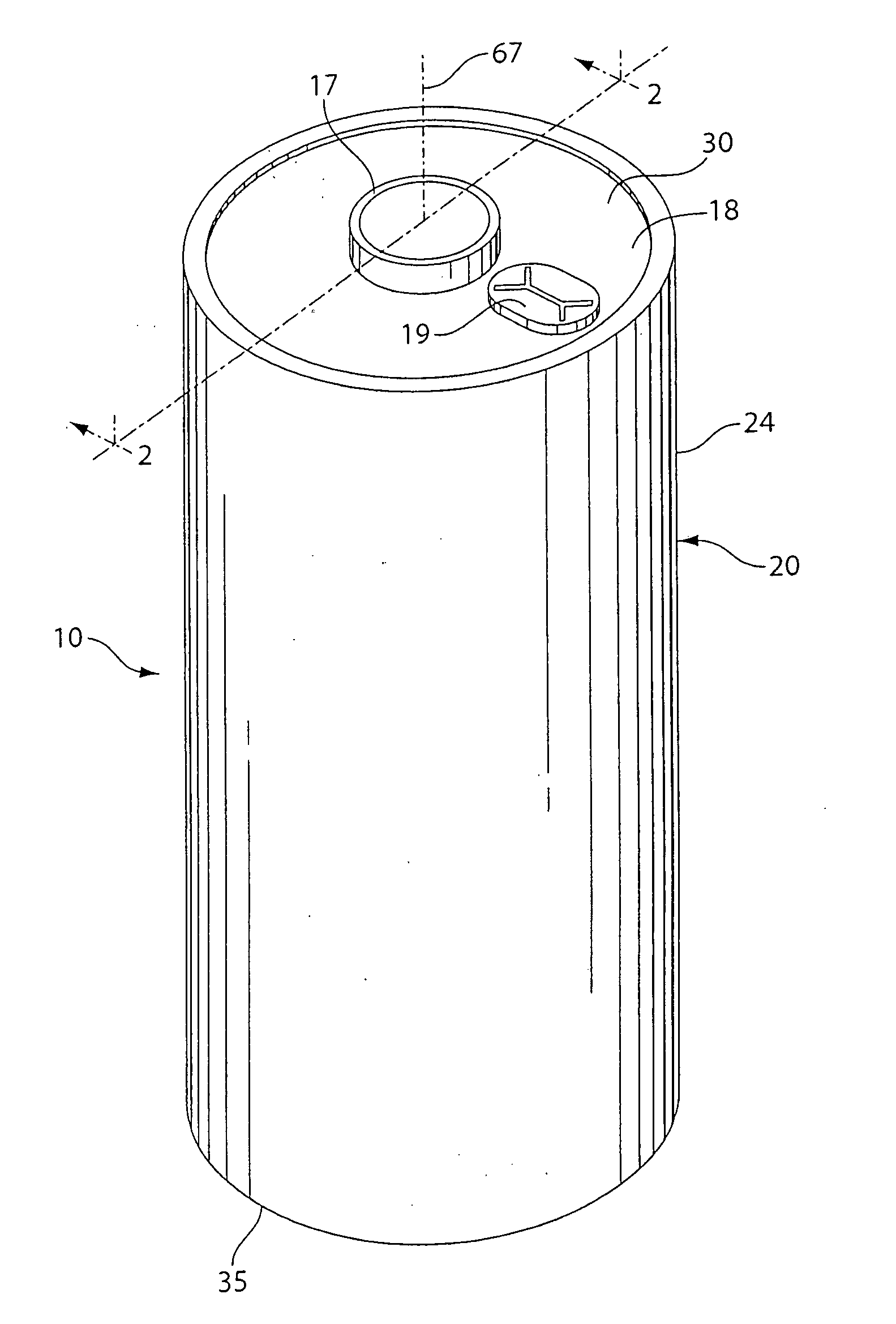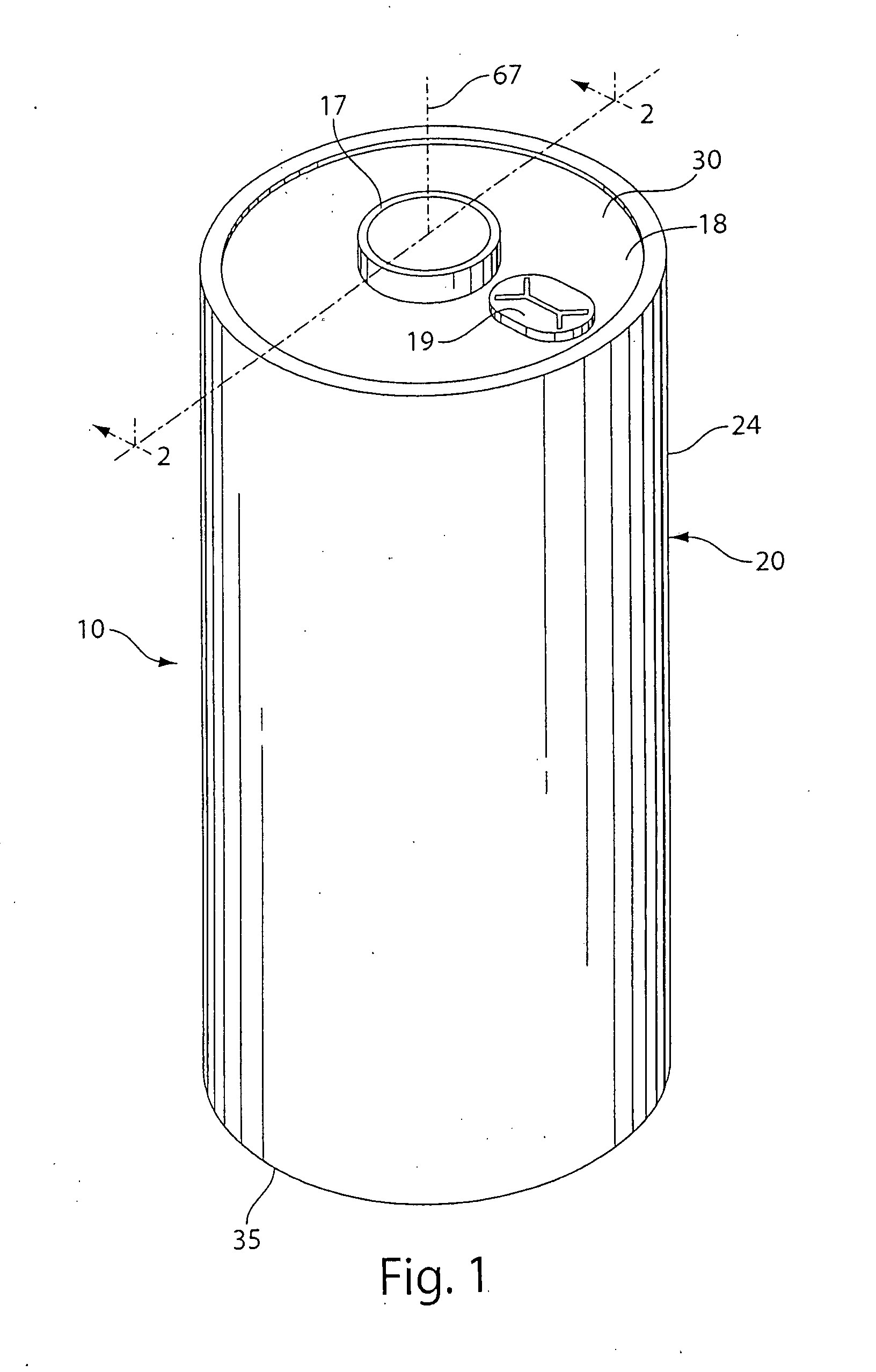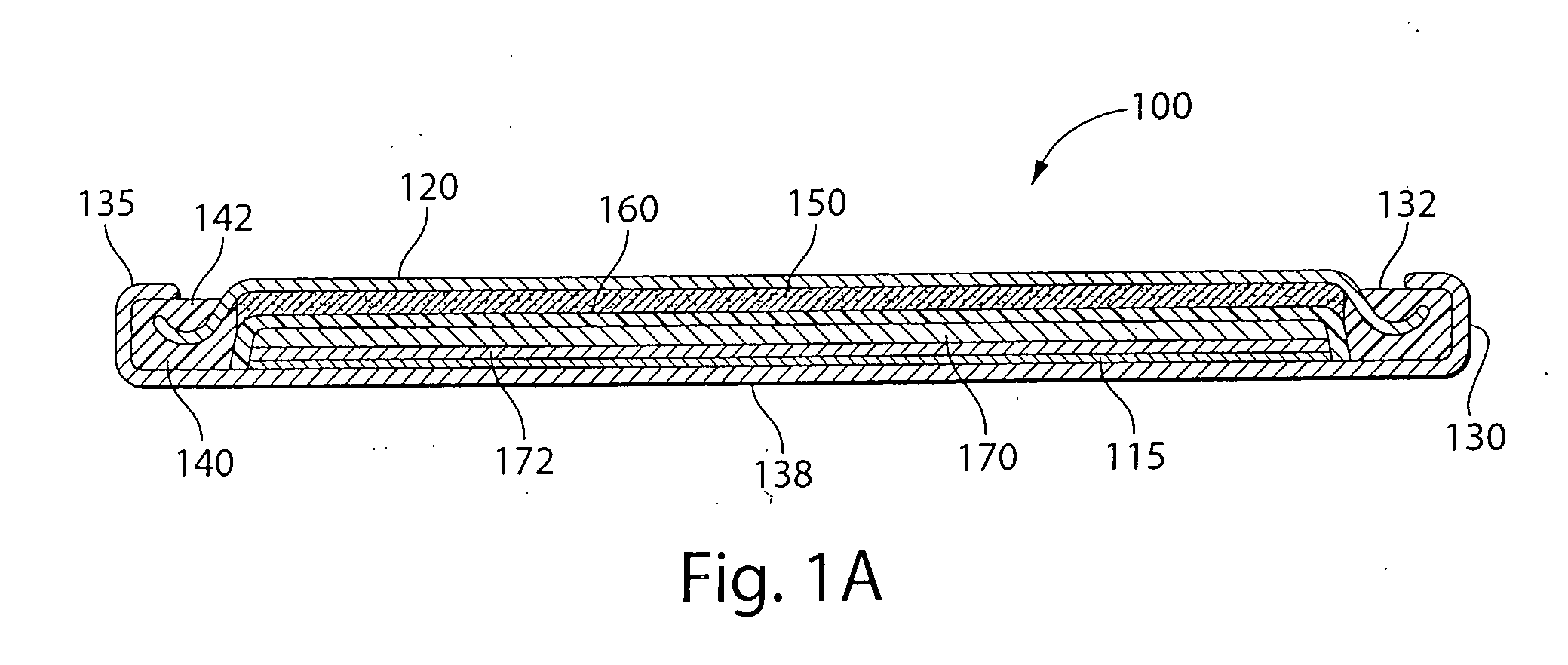Lithium cell
a lithium cell and lithium anode technology, applied in primary cell maintenance/servicing, batteries, non-aqueous electrolyte cells, etc., can solve the problems of reducing cell performance, adversely affecting cell performance, and reducing the effectiveness of the passivation layer, so as to reduce the resistance of the passive layer, improve cell performance, and retard the rate of buildup
- Summary
- Abstract
- Description
- Claims
- Application Information
AI Technical Summary
Benefits of technology
Problems solved by technology
Method used
Image
Examples
example
Experimental Test Lithium Button Cells with Cathode Comprising FeS2
[0054]Experimental test Li / FeS2 coin cells 100 (FIG. 1A) were prepared as follows:
Experimental Test Cell Assembly:
[0055]A coin shaped cathode housing 130 of nickel plated steel and a coin shaped anode housing (cover) 120 of nickel plated steel is formed of a similar configuration shown in FIG. 1A. The finished cell 100 had an overall diameter of about 25 mm and a thickness of about 3 mm. The weight of FeS2 in the cathode housing 130 was about 0.13 g which covers both sides of the aluminum substrate sheet 115. Because in this test cell 100 only the cathode side of the aluminum substrate sheet 115 facing the anode is dischargeable, then the amount active FeS2, that is, the amount which is actually dischargeable, is about 0.065 g. The lithium was in theoretical capacity excess in relation to the cathode.
[0056]In forming each cell 100, an Arbor press with a 0.780-inch die was used to punch out two stainless steel grids...
experiment 1
[0066]A Control Cell Group and Test Cell Group of button (coin) cells 100 were made as described above. The control group of cells had the following electrolyte:
[0067]Control Cell Group with Control Electrolyte:
[0068]Lithium bistrifluoromethylsulfonyl imide, Li(CF3SO2)2N referenced herein as LiTFSI, yielding a concentration of 0.8 moles / liter was dissolved in a solvent mixture comprising 1,3-dioxolane (DX) (80 vol %), sulfolane (20 vol %), and pyridine (PY) 800 ppm. The electrolyte contained less than 50 parts by weight water per million parts by weight (ppm) electrolyte.
[0069]The cells of first test group, that is, Test Cell Group I were identical (including the control cells) in construction and anode / cathode composition (coin cells 100) except that different electrolyte formulation was used in Test Cell Group I compared to the Control Cell Group. The Test Cell Group I of coin cells 100 had the following different electrolyte formulation of the invention:
[0070]Test Cell Group I wi...
experiment 2
[0075]Cells were made with Electrolyte Formulation for Control Cell Group and Test Cell Group Identical to Electrolyte Formulation 1 in Experiment #1:
[0076]Thus, the electrolyte for all cells, that is Control Cells and Test Cell Group in Experiment 2 was: Lithium iodide (LiI) yielding a concentration of 0.8 moles / liter was dissolved in a solvent mixture comprising 1,3-dioxolane (DX) (42.6 wt %), 1,2-dimethoxyethane (DME) (52.1 wt %), and sulfolane (5.3 wt %). The solvent mixture also contained 3,5-dimethylisoxazole (DMI) (0.2 wt %). The cells were made with water content in the total electrolyte of about 120 ppm by adding deionized water to the solvent mixture.
Predischarge Protocol
[0077]Predischarge (Limited Drain) Protocol for Experiment #1 Cells (Control Group Cells, Test Cell Group I, and Test Cell Group II):
[0078]All fresh cells for Experiment #1, that is, the Control Cell Group, Test Cell Group I and Test Cell Group II of Experiment #1 were subjected to the following predischar...
PUM
| Property | Measurement | Unit |
|---|---|---|
| weight ratio | aaaaa | aaaaa |
| weight ratio | aaaaa | aaaaa |
| weight ratio | aaaaa | aaaaa |
Abstract
Description
Claims
Application Information
 Login to View More
Login to View More - R&D
- Intellectual Property
- Life Sciences
- Materials
- Tech Scout
- Unparalleled Data Quality
- Higher Quality Content
- 60% Fewer Hallucinations
Browse by: Latest US Patents, China's latest patents, Technical Efficacy Thesaurus, Application Domain, Technology Topic, Popular Technical Reports.
© 2025 PatSnap. All rights reserved.Legal|Privacy policy|Modern Slavery Act Transparency Statement|Sitemap|About US| Contact US: help@patsnap.com



